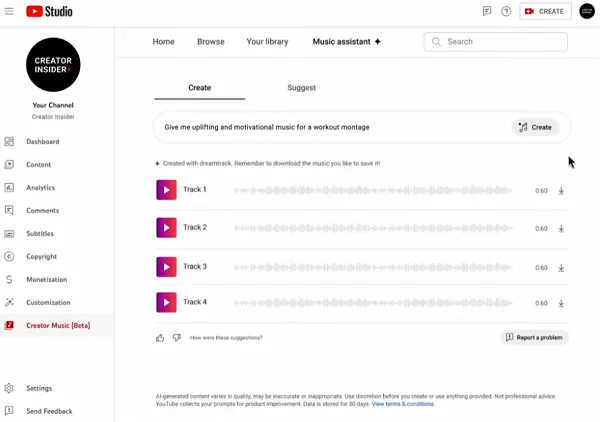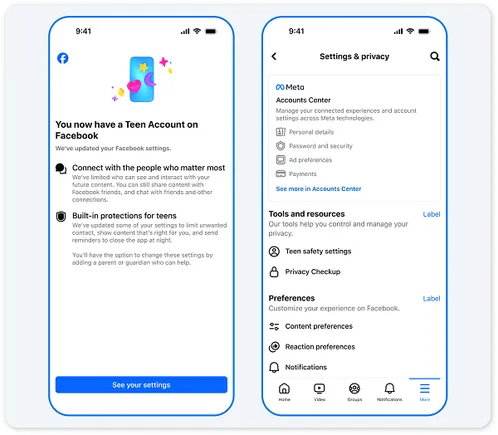How Does an AI Chatbot Work?
What Is an AI Chatbot?
An AI chatbot is a software application designed to simulate conversation with human users. They operate across platforms such as websites, messaging apps, and mobile devices. What makes them stand out from simple automated replies is their ability to interpret natural language and respond with relevant, meaningful answers.
Initially, chatbots relied on strict rules and predefined scripts. However, today’s models use machine learning and natural language processing to learn from real interactions and adjust their responses. We’ve seen how their ability to hold conversations has transformed everything from customer service to casual, relationship-style interactions.
In comparison to basic scripted bots, AI-driven systems offer dynamic replies that adapt based on user behavior, tone, and even prior history.
Key Components of an AI Chatbot
The foundation of any AI chatbot rests on several key components:
-
Natural Language Processing (NLP): Allows bots to break down sentences, identify meaning, and generate grammatically correct responses.
-
Machine Learning (ML): Continuously learns from interactions to improve accuracy and tone.
-
Intent Recognition: Determines what the user wants based on context, not just keywords.
-
Dialog Management: Helps maintain the flow of conversation, making sure the interaction feels natural.
-
APIs and Integrations: Allow bots to interact with databases, schedules, and third-party tools.
Each of these parts contributes to making the chatbot feel intuitive rather than robotic. For instance, we’ve tested bots that respond based on emotion, choosing words differently when users sound frustrated versus excited.
In some adult use cases, this complexity is pushed even further. A NSFW AI Chatbot, for example, relies heavily on tone and context recognition to maintain fluid, respectful, and responsive interaction within a more mature setting.
How Do AI Chatbots Work?
At the core, chatbots function through a sequence of input processing, response generation, and feedback learning. Here’s a simplified version of the cycle:
-
User Input: The chatbot receives a message, either typed or spoken.
-
Intent Detection: It parses the sentence to figure out what the user wants. Is it a question, a command, or just small talk?
-
Response Generation: Based on the intent and context, the bot pulls a suitable reply—either from a database or by generating it using language models.
-
Feedback Loop: User reactions (like continuing the chat or ending it) help refine the bot’s future responses.
Most modern chatbots use advanced transformer models like GPT, which allow them to understand multiple layers of context. That’s why some bots can remember things you said minutes—or even days—ago, adding emotional depth to the conversation.
Still, this isn’t just about smart programming. Personality plays a major role. A dirty talk AI, for instance, isn’t just responding with words. It’s maintaining a persona, adjusting flirtation levels, and keeping the conversation within boundaries defined by its developers. It’s this blend of context awareness and character consistency that makes such bots compelling to users.
Applications of AI Chatbots
AI chatbots aren’t limited to customer service. Their usage has spread across industries, including:
-
Retail and E-commerce: Helping users find products, apply discounts, and track orders.
-
Healthcare: Offering symptom checkers, appointment scheduling, and patient reminders.
-
Education: Providing tutoring or answering curriculum-related questions.
-
Finance: Assisting with transactions, fraud alerts, and account management.
-
Entertainment and Companionship: Creating AI personalities for casual chats, games, or even romantic simulations.
In the same way, bots have found a stronghold in adult entertainment. One reason they’re so popular in that space is the rise of anonymous interaction. People want privacy but still crave emotional or sensual interaction. Consequently, industries tied to Adult SEO have seen major growth, as competition to rank chatbot-related platforms has become increasingly fierce.
From chat-based therapy to virtual dating, the spectrum is wide. It’s not only about utility—it’s often about companionship, trust, and escapism.
Ethical and Practical Considerations
Despite their usefulness, AI chatbots raise some serious ethical questions. Key concerns include:
-
Data Privacy: What personal data is collected and how it’s used.
-
Bias and Discrimination: AI can mirror biases in its training data.
-
Emotional Manipulation: Bots that simulate emotions might blur boundaries, especially for vulnerable users.
These risks are particularly heightened in sensitive applications. If someone regularly chats with a bot simulating intimacy or emotional support, there’s potential for real psychological dependency. For that reason, developers have to put strong safeguards in place—especially for bots operating without human supervision.
Meanwhile, ethical frameworks are slowly emerging to regulate how bots should behave. Whether it’s providing content warnings or flagging harmful replies, these tools are gradually being introduced to make chatbot experiences safer and more transparent.
It’s worth noting that many platforms optimize their ethics content using Keywords used in Different-different sections of paragraphs for SEO purposes. This ensures the relevant audiences can find answers on privacy, boundaries, and ethical usage when they’re needed most.
Benefits of AI Chatbots
There are plenty of reasons why AI chatbots are becoming so popular. These are some of the most important ones we’ve seen in actual case studies and feedback:
-
24/7 Availability: Bots don’t need breaks, which means users always get a response.
-
Consistency: Unlike humans, they don’t get tired or distracted.
-
Cost Efficiency: Businesses save money by reducing live support teams.
-
Scalability: One chatbot can serve thousands of users simultaneously.
-
Personalization: Over time, bots can adapt to user behavior, preferences, and tone.
Still, not all bots are created equally. Those tailored for specific niches—like mature roleplay or relationship simulation—often offer far more personalization options. Platforms that focus on Sexting AI without registration, for example, remove barriers like signups and long onboarding, giving users a faster, more private experience. This shows how important flexibility and accessibility are to users in today’s market.
The Future of AI Chatbots
As we look ahead, AI chatbots are moving toward becoming full digital companions. Thanks to advances in emotional AI, facial recognition, and voice modulation, these bots may soon simulate real-time emotion far more effectively than they do now.
We’re already seeing experiments with voice-based and even video-based chatbots. These bots can interpret voice tone and adjust their reply to show concern, joy, sarcasm, or excitement. Eventually, they may even read facial expressions to decide whether a user is bored, happy, or angry.
Future Trends in Chatbot Development
-
Chatbots can support people with disabilities.
-
They can aid mental health and social anxiety.
-
Developers must address ethics and safety.
-
Smarter bots increase demand for emotional intelligence.
-
Uses include entertainment, support tools, and virtual characters.
-
Rising interest in Sexting AI without registration.
-
Shows preference for private, smart companionship.
-
Keywords help attract specific audiences.
-
Focus is on connection, not just traffic.
-
Users want useful and emotionally aware AI.
Conclusion
AI chatbots have come a long way from scripted tools that answered basic FAQs. Today, they represent a complex blend of language processing, emotional intelligence, and user-centered design. Whether they’re helping you reset a password or offering a warm chat on a lonely night, their role is becoming more personal—and more essential.
The tech is only getting better, and while ethical questions remain, the benefits they bring are too significant to ignore. From shopping and education to more sensitive interactions, AI chatbots are quickly becoming a reliable presence in our everyday digital lives.












![How to Find Low-Competition Keywords with Semrush [Super Easy]](https://static.semrush.com/blog/uploads/media/73/62/7362f16fb9e460b6d58ccc09b4a048b6/how-to-find-low-competition-keywords-sm.png)




















































































































































































